What Do Millennial Teachers Want?
In the largest study of its kind, we reached out to 30,000 randomly selected K-12 teachers born between the years 1981 and 1996. More than 1,000 teachers submitted a response—a statistically significant sample of the estimated 1.2 million millennial teachers nationwide.

This article is even better when paired with the companion discussion guide.
Millennials are the largest generation in the workforce, so we wanted to learn more about the new hiring teacher pool as a market. Hiring isn’t just about vetting applicants; part of the process is selling the job to great talent. And in any sales effort, marketers need to figure out more about their audience. What features do consumers care about in a product or service? What is their process for making purchasing decisions?
Nike, for example, knows what marathoners want in a running shoe, whether it be support, lift, or style. But more than creating a great product, they also figure out where the average marathoner looks for information. Are runners shopping online or in stores? Do they ask other runners before buying their shoes? Once Nike understands their market’s purchasing process, they can create a strategy that speaks directly to runners’ needs, putting their brand in front of consumers at key moments.
In the same vein, we wanted to know more about millennial teachers’ job searches. Our research sought to answer two questions: What are millennial teachers looking for in a job, and what is their decision-making process?
We know that teacher recruitment is fundamentally changing. A peek into our research shows us that millennial teachers are researching districts online before applying. And just like millennial employees in the private sector, millennial teachers’ focus in the job has shifted.
We’ll show you what teachers are looking for in a job, then break down their decision-making process. With this information in hand, school leaders can target teachers on the channels they use most.
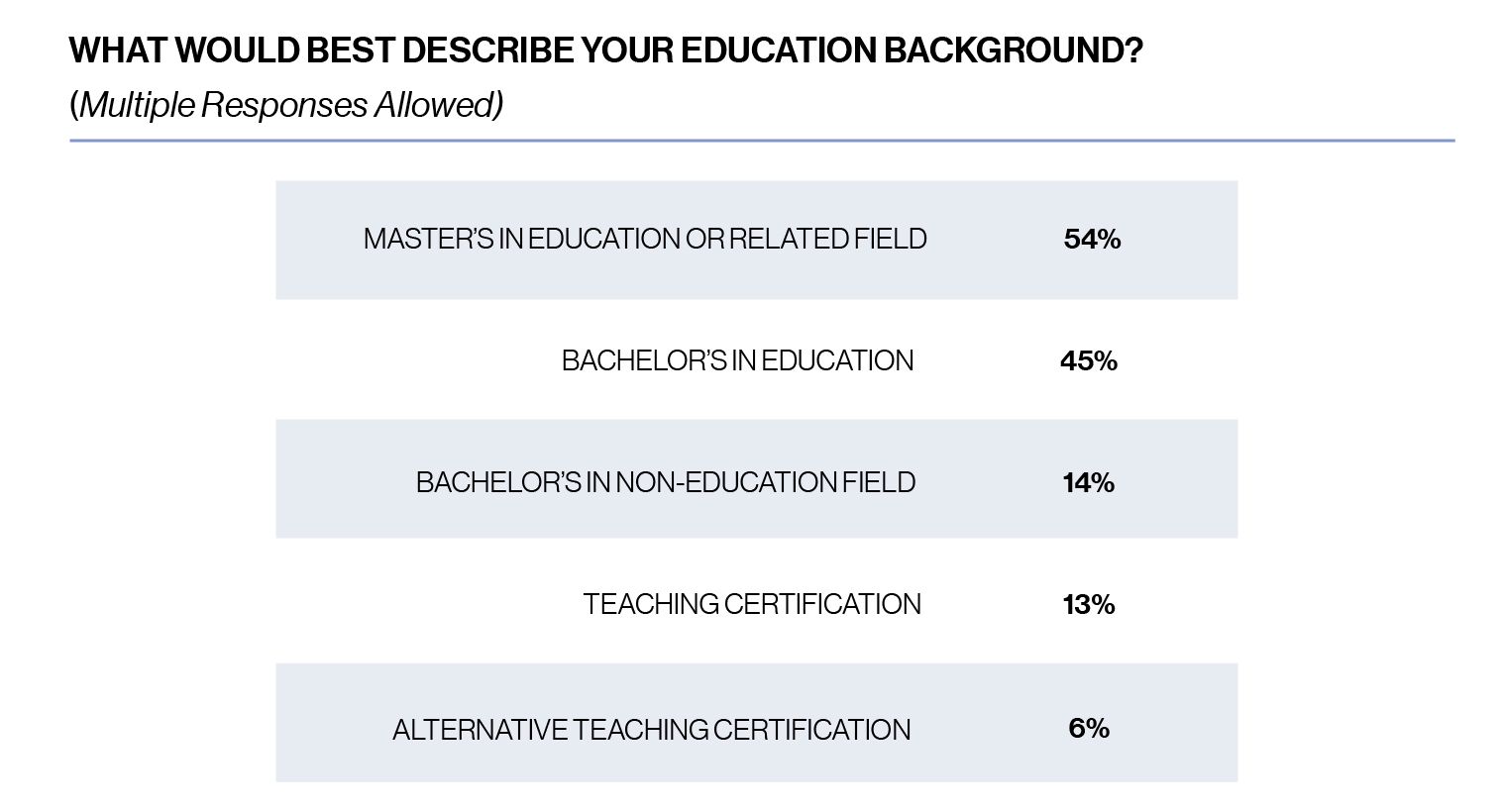
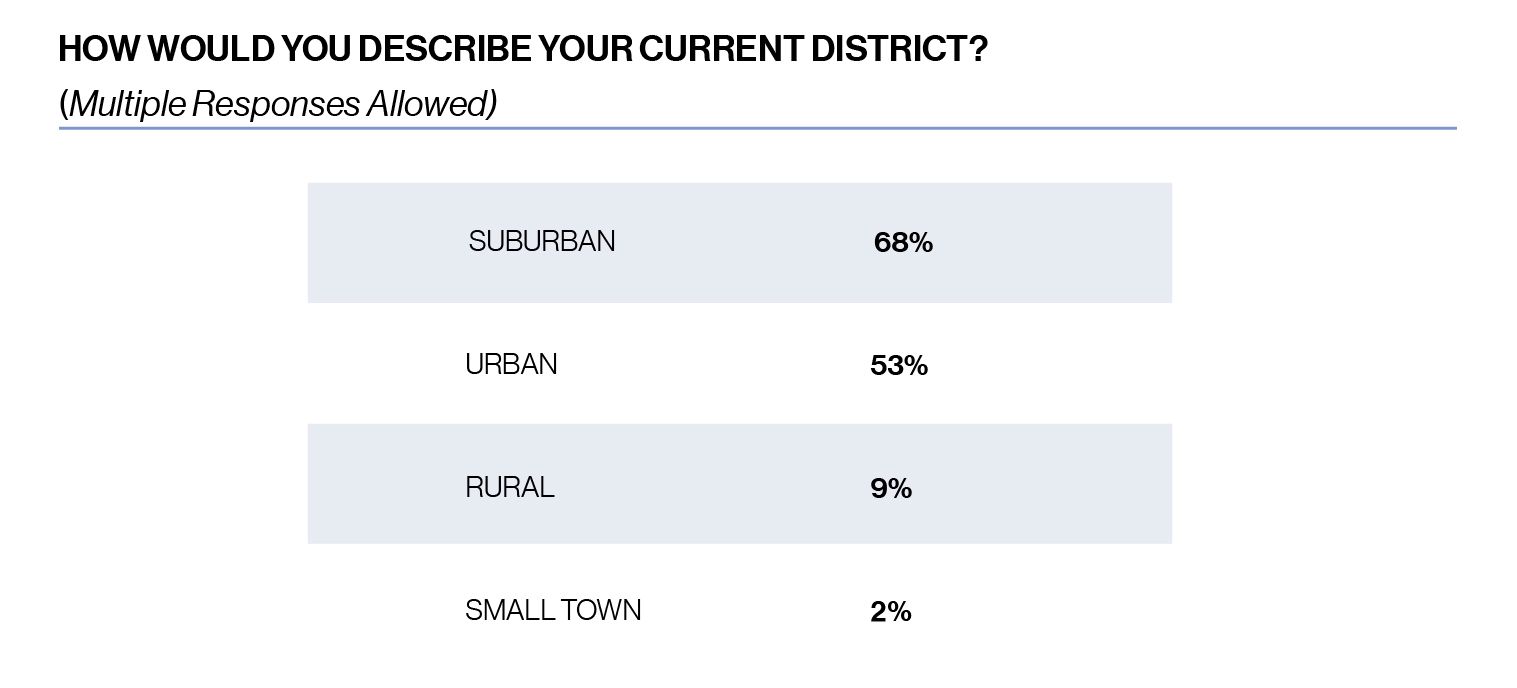
Click on any section to jump right to it!
- What are millennial teachers looking for in a job?
- What is their decision-making process?
- The technology gap in school recruitment
- More thoughts from teachers across the nation
What are millennial teachers looking for in a job?
Research into millennials across all sectors indicates that they tend to care about impact, sometimes even more than salary. We wanted to see whether this held true for millennial teachers—especially considering that educators, historically, aren’t particularly driven by their paychecks. We asked respondents to rate the following statement on its validity using a scale of 1-7: “My decision of where to work was largely shaped by salary and benefits.”
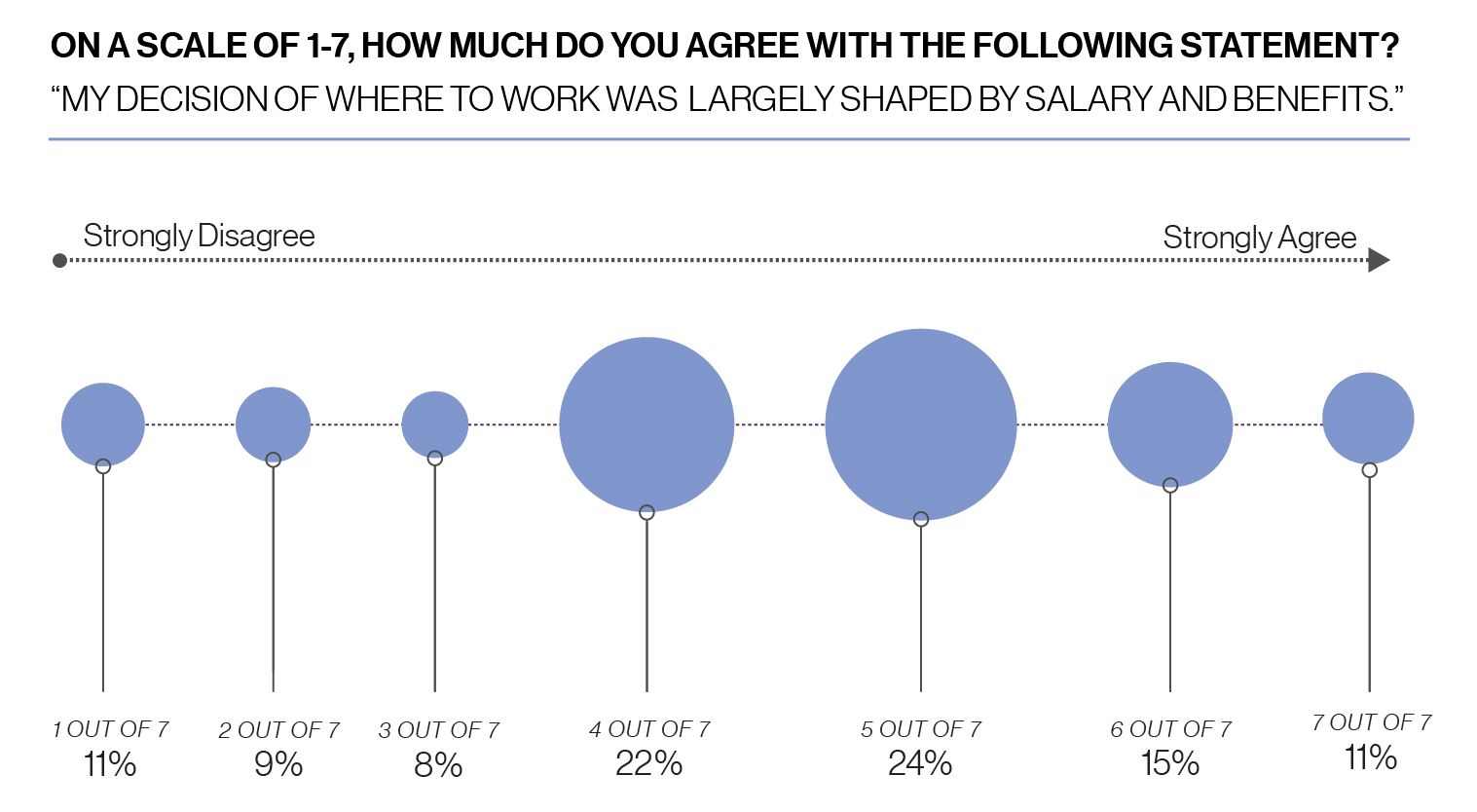
The numbers suggest that while salary and benefits factor into decision-making for millennial teachers, they aren’t dealbreakers. Only 26% of those surveyed answered 6 or 7, indicating that salary was critical in their decision-making. More than half responded moderately with 3, 4, or 5, and about a fifth indicated that salary didn’t really matter by selecting 1 or 2. While salary is certainly important, our research suggests that other factors weigh just as heavily in millennial teachers’ decision-making.
What are those other factors? Given a list of school characteristics, we asked those surveyed to select up to three factors that were very important when determining where they would teach. The most common answer was school culture, followed by location, school leadership, and flexibility, respectively.
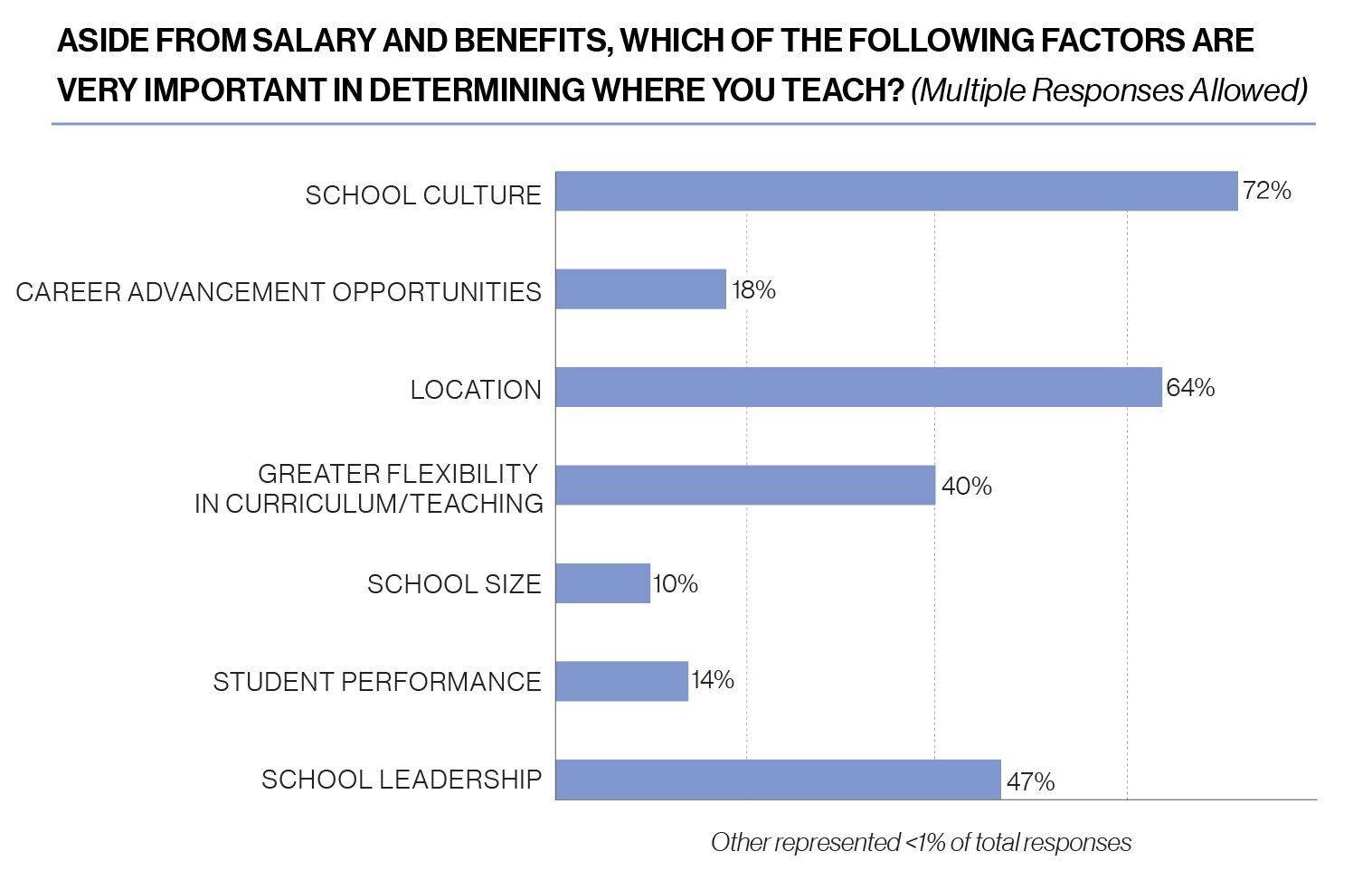
This ranking held true in teachers’ open responses as well. As part of the survey, teachers were given the option to answer the question, “What advice would you give school leaders on marketing to teachers?” When we broke down teachers’ responses, words like “culture” and “support” were in the top six most frequently used words besides neutral words like “teacher” or “job”. “Culture” even ranked higher than “salary.” One teacher’s tip for administrators was, “Don’t market the position that needs to be filled; market the school and the culture.”
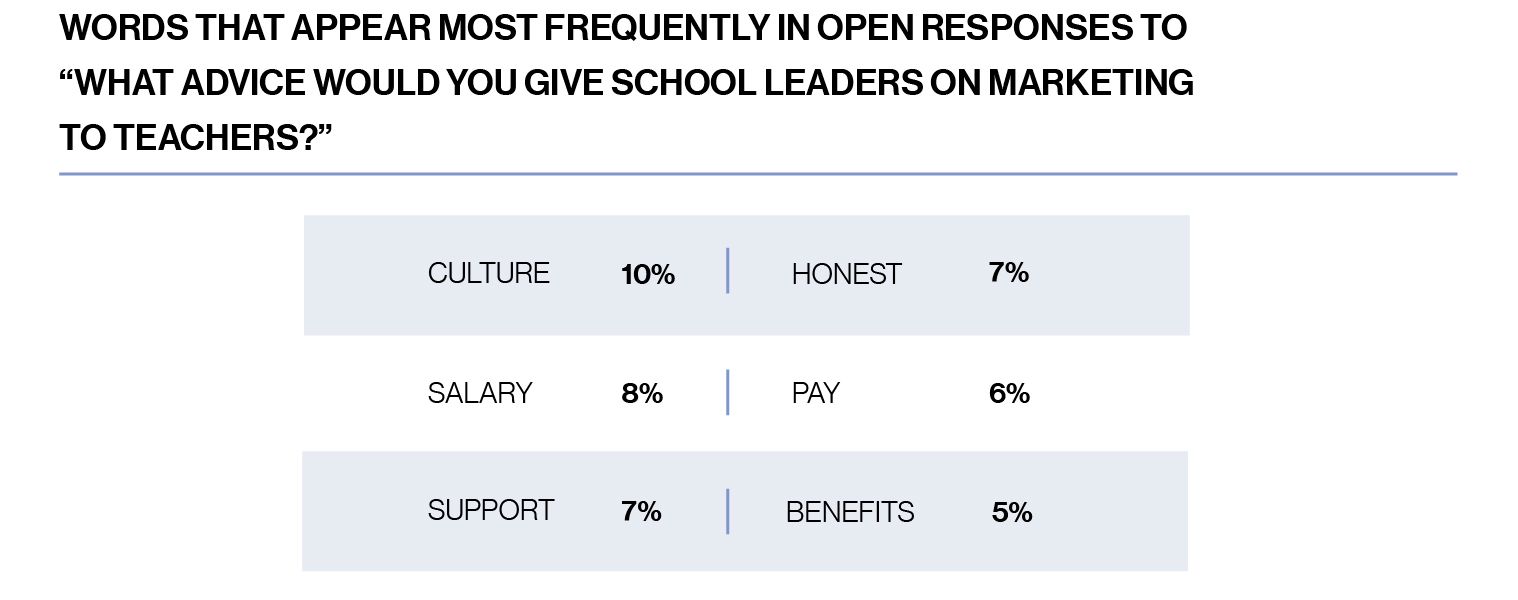
These results are consistent with millennial behavior across all sectors. In the private sector, creating great culture has become an executive level position; many companies now hire chief culture officers. It makes sense—if millennials are finding their sense of purpose and impact at work instead of at home, they’ll want to work in a fantastic environment.
Location, on the other hand, poses a unique issue for schools. Research shows that millennials are more comfortable with urban life than previous generations. However, many districts that struggle with recruiting teachers are categorized as rural. Whether or not you feel like your district matches millennials’ desires, the numbers show that location needs to be taken into account.
From a marketing perspective, there are a couple of ways to go about this. One strategy is to draw attention to the benefits of your location—the community feel, the low cost of living, the opportunity to reconnect with nature. Another option is to build up other factors that make your district ideal for millennials: a great school environment, supportive leadership, or flexibility in the classroom. Create messaging that brands your district as the best in the area for one core feature. We talk more about marketing your location in Ramp Up Your Recruitment.
In considering leadership, we noticed that teachers’ open responses often paired the word “leadership” with “support” and “honesty.” One teacher asked for “better support during the first year... less promises and more honesty.” Another said, “It is important for me as a teacher to know the administration is there to support me, and that they care not only about student welfare, but about me being successful and happy as an educator.” One respondent even suggested that creating a teacher-focused district would allow teachers to better support students.
Fostering a great culture, building support for new teachers, providing flexibility in the classroom—these are issues that school leaders know best. Beyond discovering what teachers are looking for in a job, however, we also wanted to figure out how they’re evaluating these factors in a prospective district—how are they researching future employers? As you might have guessed, the process seems to be moving online.
What is their decision-making process?
When consumers can scroll through online reviews, watch testimonial videos, and dig around a brand’s website, they take the sales process into their own hands. Today, the buyer, not the seller, is in control.
When looking for a new car, for example, millennials might ask car dealers for their best offer. But that’s usually after looking at online reviews, researching the car’s value and pricing on discount sites, and consulting with friends and family.
Forming relationships with consumers is still critical; the difference is that those relationships often begin online. Successful marketers have adapted to this change by creating a multi-channel approach—a marketing strategy that meets their audiences both on the web as well as in person.
The same is true for teacher recruitment. Today’s teachers are pulling out their phones to Google the district, comparing districts’ compensation packages and checking regional housing prices before sending in an application.
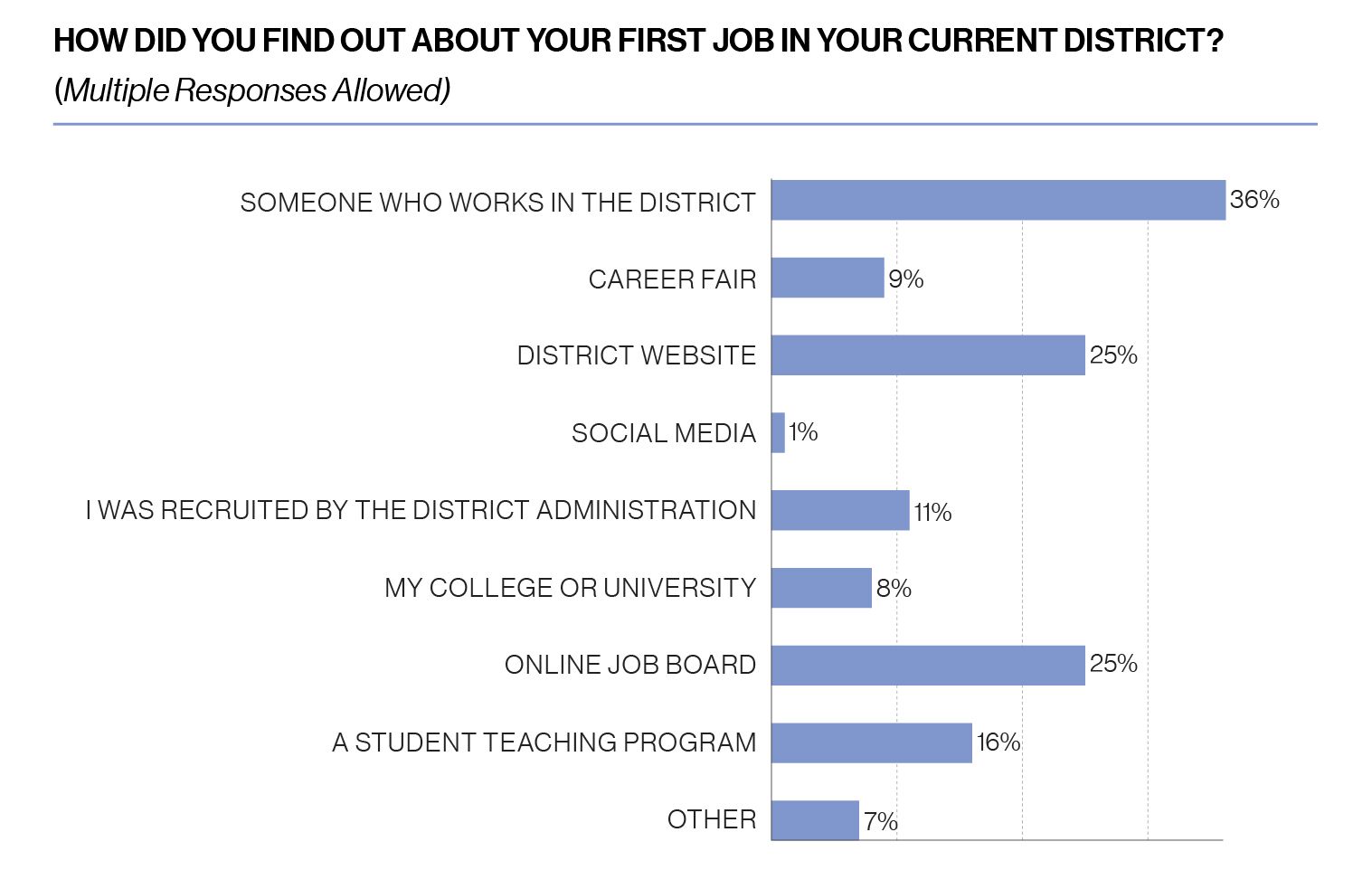
Our research shows that over half of millennial teachers first found their current position on the internet. About a quarter of millennial teachers looked at online job boards, and an additional 25% found their positions on district websites. In-person relationships haven’t lost their value—over a third of teachers found out about the position from a colleague in the district—but that doesn’t override the shift taking place. Popular forms of in-person recruitment like careers fairs (9%), university connections (8%), and direct recruitment (11%) are dwarfed by virtual options.
“I believe school leaders should consider having an online presence that explains a bit about the school and the students,” one teacher advised. Others suggested posting projects students are working on, creating user-friendly websites, and focusing on school culture. Across the board, the call for digital platforms—online job boards, updated websites—was loud and clear. Since online channels are playing such a significant role in finding jobs, we wanted to see how teachers did additional research when making a career decision. We asked a series of true or false questions about their process for learning more about a district.
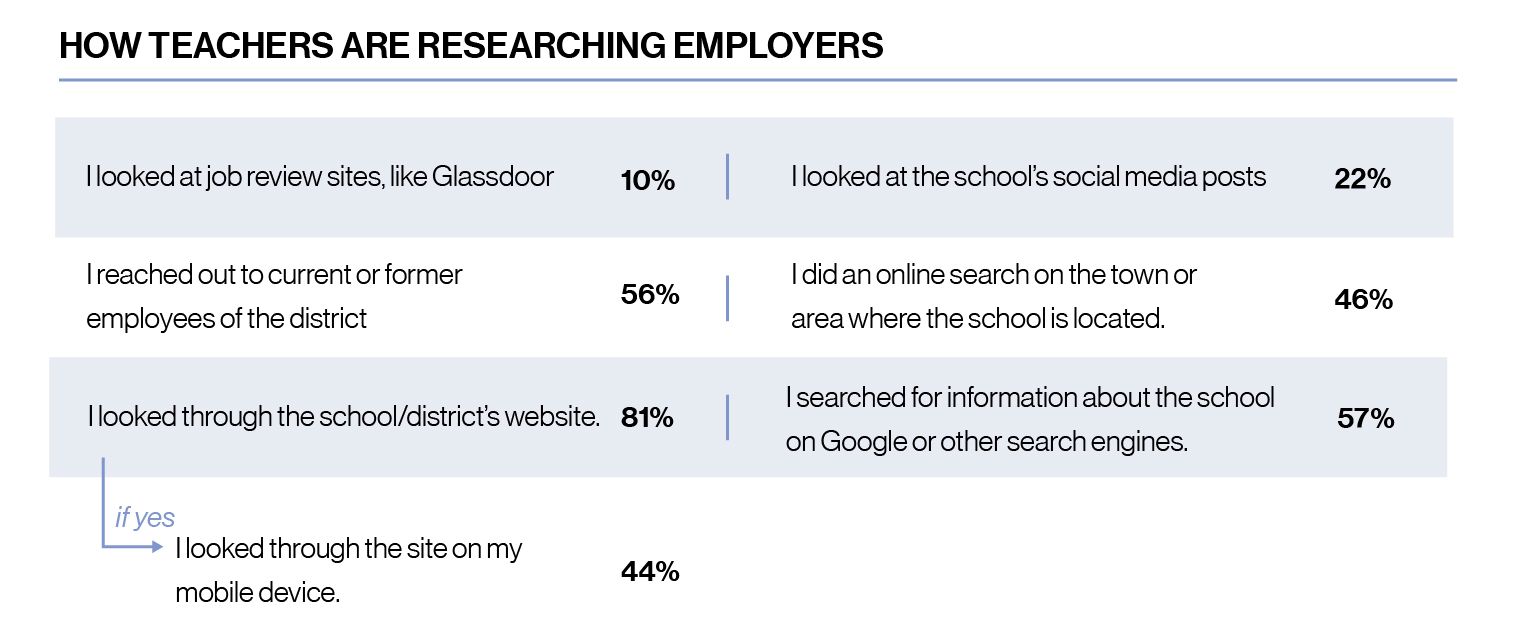
True to the stereotype, most millennials start their job explorations online. A whopping 81% reviewed a district’s website before accepting a position there. Of that number, almost half (44%) looked at these sites on a mobile device. If a district’s website doesn’t work on smartphones, it risks locking applicants out altogether.
After the website, teachers are turning to search engines to learn more about a district. About 57% of teachers searched for more information about a district, and 46% specifically conducted online research on a school’s town or area. Only about 22% of teachers checked districts’ social media, which could be driven by the lack of school social accounts.
Teachers are eager to hear, firsthand, what it’s like to work in a district; testimonials are key to teachers’ decision-making process. Over half of millennial teachers surveyed reached out to current or former employees of the district where they applied—whether online or in person. Formal job review sites, however, haven’t yet picked up steam; only about 10% of teachers surveyed visited job review sites like Glassdoor.
No matter how you look at it, millennials are finding information on a variety of channels. Before they fill out an application, they’ve already started to form a relationship with your district—whether online or in person.
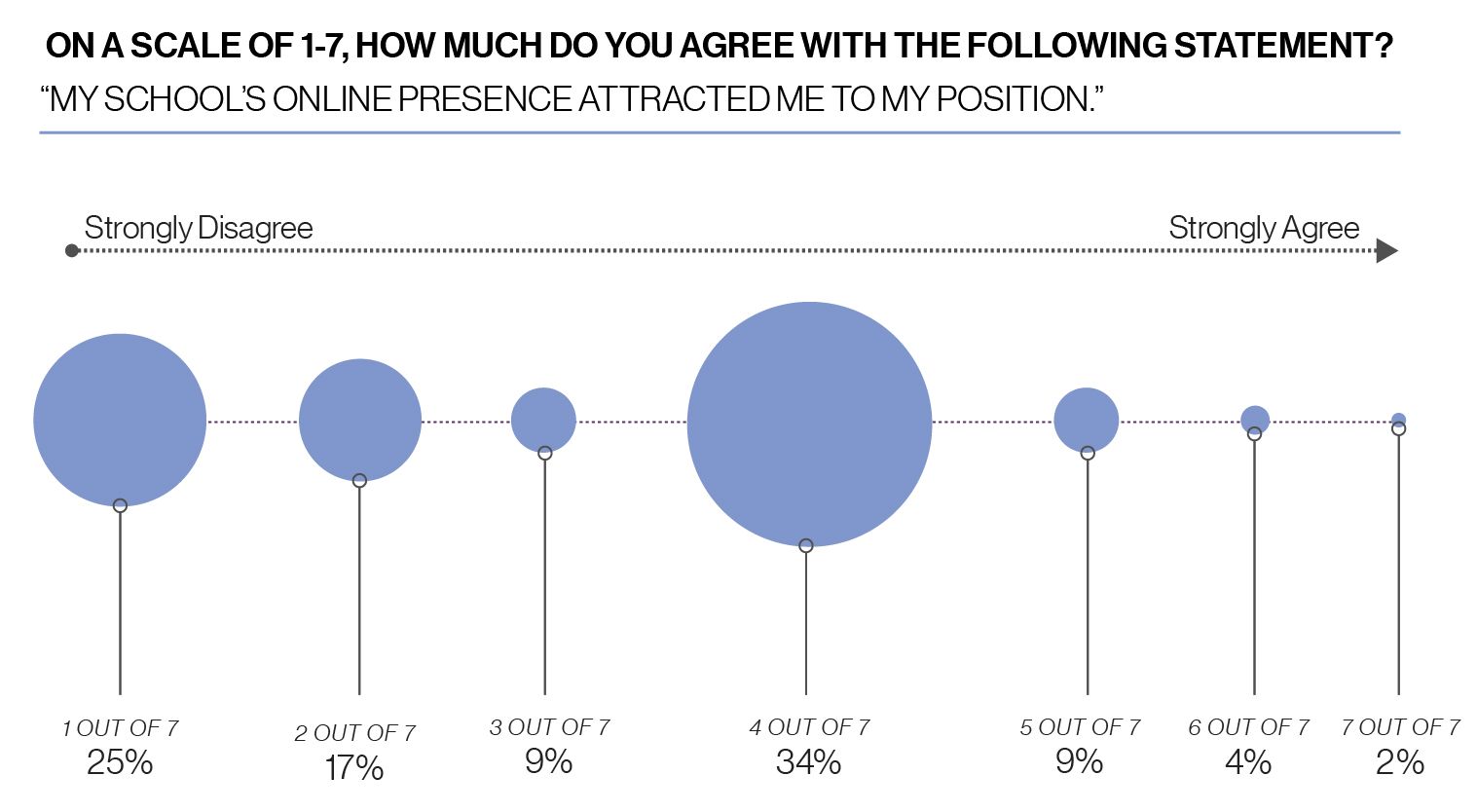
School districts have the opportunity to take control of their online identities, but are they doing so? We asked teachers to indicate, on a scale of 1 to 7, how much their district’s online presence attracted them to their current position. Of the answers we received, a staggering 85% were negative or neutral. For every teacher who chose a 7, indicating that their district’s online presence was a major pull factor, more than ten chose a 1, indicating that their district’s online presence was not a key recruitment tool.
The technology gap in school recruitment
As you’ve probably already realized, there’s a disconnect between the channels schools are using to recruit and the ways millennial teachers are researching prospective districts.
In addition to our survey of millennial teachers, we examined the online presence of a statistically significant sample of 800 U.S. schools in 2018. Only 8% of the districts sampled had dedicated space on their websites—beyond job postings alone—for recruitment. These districts had at least one or two compelling pieces of content on the subject, like a page describing the district’s location, a teacher testimonial, or a video showcasing the district.
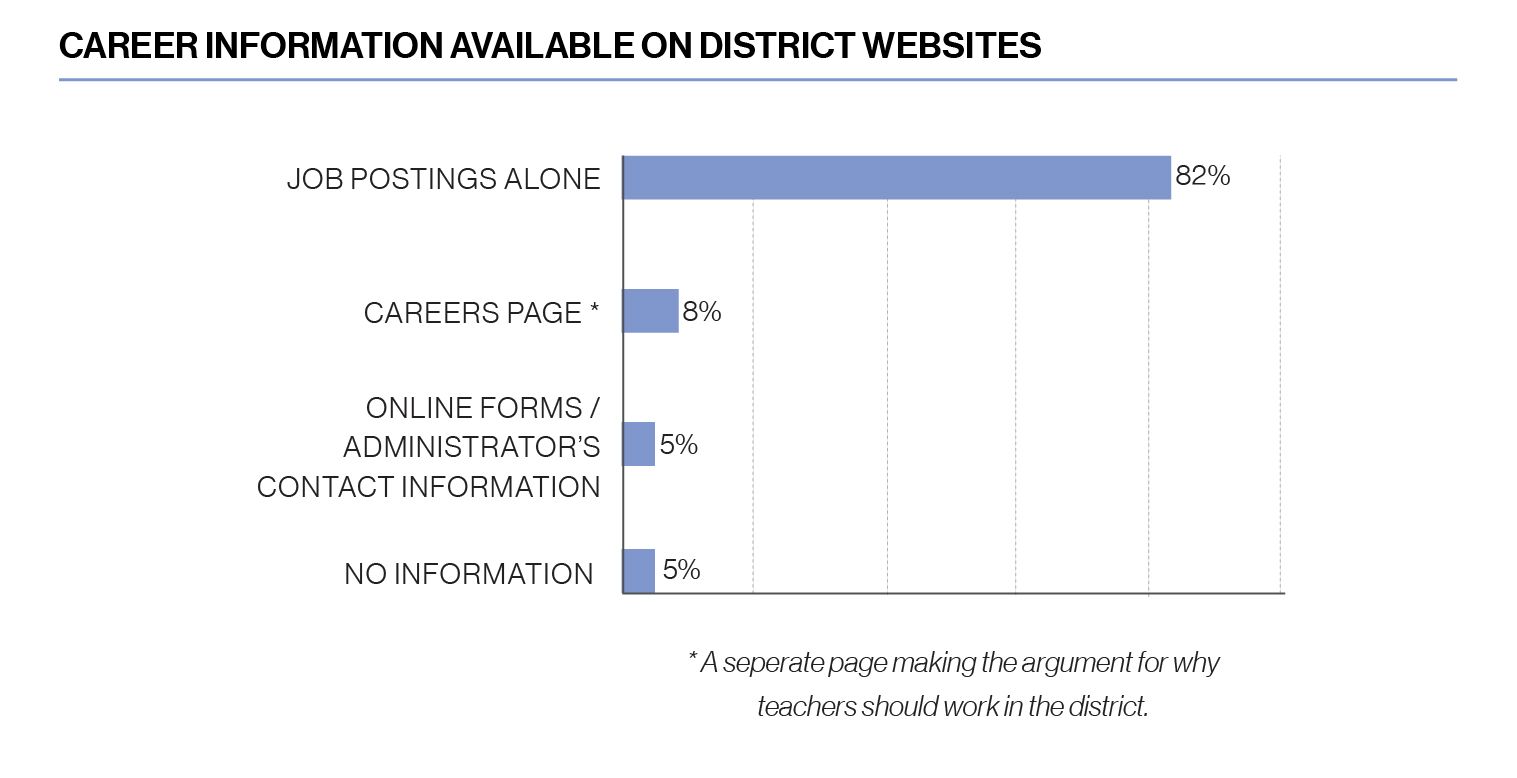
Nearly 82% of districts provided job postings alone, without any reasoning as to why teachers should apply. Most only posted job opportunities, sometimes without a description of the work at all. About 5% didn’t even have job postings—only an interest form for candidates to fill out or an administrator’s contact information. The remaining 5% had no careers information whatsoever.
Data on districts’ social media presence tells a similar story. In the private sector, LinkedIn and Instagram are popular recruiting tools. LinkedIn is essentially built for recruitment, and Instagram gives recruits a window into a company’s culture. Recruiters post photos of staff meetings and team-building initiatives on Instagram to give recruits insight into an employee’s day-to-day experiences.
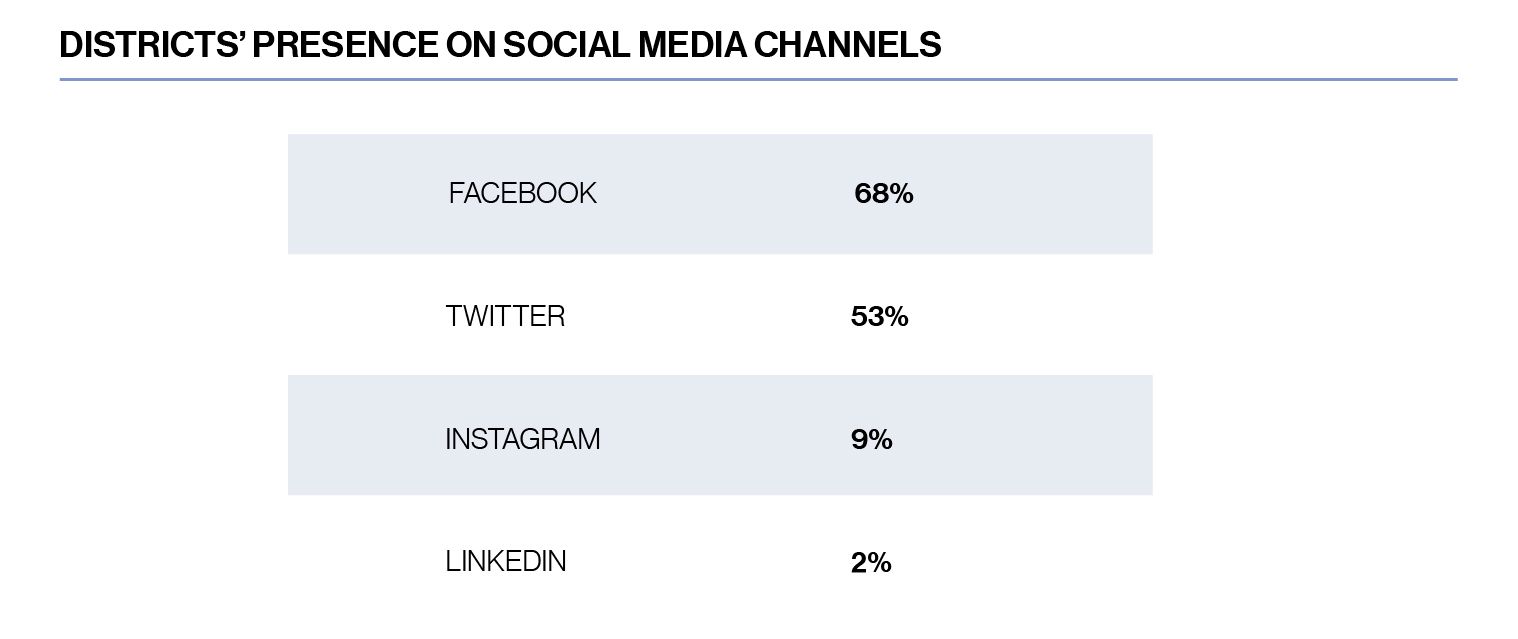
For the teaching community, Instagram is especially critical: teachers have formed a community on the app, noted NPR. They share curriculum ideas, post photos of student work, and share teacherly outfits. A few teachers’ accounts have even gone viral. Buzzfeed recently shared the story of a teacher making quadruple her salary through the app. Most districts, however, aren’t taking the opportunity to tap into this community. Around 9% of districts have a presence on Instagram, and a meager 2% are on LinkedIn.
In Ramp Up Your Recruitment, we dig into three ways school leaders can begin to bridge the recruitment gap, creating strategies to reach millennial teachers.
More thoughts from teachers across the nation:
"What advice would you give school leaders on marketing to teachers?"
*First Grade Teacher, MA: “Invite prospective teachers to come and observe a typical school day.”
High School Chemistry Teacher, UT: “Teachers talk! Make your current teachers happy, and they will get you more! We teach the next generations of teachers as well.”
Sixth Grade Teacher, MN: The great teachers and staff you have—sell them. That’s the reason, besides my students, I get up day after day to do what I do.
High School English Teacher, LA: “Schools need to have a reputation for
empowering and supporting their teachers.”
Second GradeTeacher, IA: “Make sure there is a visible presence on social media and online that shows the great things our district is doing.”
Special Education Teacher, NV: “Teachers want to work in a school with great leadership and school culture. We want that family feel. Salary and benefits are a huge factor, but if we are unhappy in a school, we will not want to stay. Leadership and culture are key.”
*Teachers’ responses have been edited for grammar and clarity.
Subscribe below to stay connected with SchoolCEO!


